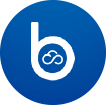The strategy of multi-cloud adoption has quickly become the compass guiding enterprises towards diverse business horizons. Each cloud service provider offers a unique array of features, underpinned by a constant cadence of innovation. This multi-cloud voyage liberates organizations from compromise, to some extent shielding them from the security perils associated with individual cloud platforms. However, the flip side of this coin is the complex challenge of securing access across the multi-cloud spectrum without impeding speed and productivity. It’s in this dynamic backdrop that the SecOps and DevOps alliance seeks the holy grail of access management capable of spanning and unifying permissioning across IaaS, PaaS, SaaS, and DaaS seamlessly.
Cloud-forward organizations need to harness the cross-functional power of SecOps and DevOps, striving for both fortified security and optimal performance through multi-cloud Just-In-Time (JIT) administration for privileged access.
The Security Odyssey in a Cloud-First World
Traditional security measures, while well-versed in safeguarding against conventional on-premises threats, fall short in the face of sophisticated attacks that target network breaches and compromise both human and non-human identities. Security misconfigurations, excessively privileged user accounts, perpetually standing permissions, and shaky onboarding/offboarding processes all contribute to the alarming surge in cloud breaches each year.
Cloud access solutions offering Just-In-Time (JIT) administration for privileged access are gaining traction because they allow organizations to dynamically provision user access and gain insights to mitigate threats tied to risky user behavior. While many of these solutions undoubtedly bring cloud access capabilities to new heights, they often leave gaps in coverage due to their specific cloud service models (IaaS, PaaS, SaaS, or DaaS). Some are tailored to specific major CSPs, which complicates and limits multi-cloud security.
The Journey to Least Privilege
In July 2021, Gartner introduced its PAM maturity curve, a spectrum ranging from basic features like account discovery and account vaulting to advanced capabilities like CI/CD automation and the golden standard of Least Privilege.
Enter Britive, a trailblazer in multi-cloud access management, which offers a permissioning solution that spans the entire Gartner PAM maturity curve despite pivoting away from traditional PAM systems. Being inherently cloud-native, it requires no agents or proxies, providing unified access management across all major cloud platforms. This view is paramount in comprehending the permissions granted to users and facilitates the implementation of JIT administration for privileged access—granting and revoking privileges dynamically. Britive seamlessly integrates with CI/CD automation tools like Terraform, equipping DevOps teams with the tools they need to operate efficiently without compromising on security. Among the 14 PAM features scrutinized by Gartner, Britive’s platform encompasses all but four—features designed for on-premises environments and are thus irrelevant in the cloud-focused business landscape.
Key Features of a Modern Cloud Access Management Solution
- Account Discovery: The foundation of multi-cloud PAM, providing a comprehensive inventory of all accounts with access to applications, databases, containers, and associated services.
- Account Vaulting: Safely storing highly privileged administrative accounts and passwords in a software vault, tightly controlling access and reducing vulnerability exposure.
- Command Elevation / Least Privilege: The bedrock of a continuous least privilege access state, allowing users, both human and non-human, to access restricted resources only when necessary and for the required duration.
- Just-In-Time (JIT) Access: Dynamic access based on user roles, offering ephemeral access rights that expire automatically, reducing attack surfaces and security overhead.
- ITSM Integration: Streamlined alignment of business objectives and user account management, facilitating efficient issue resolution without impeding DevOps agility.
- Privileged Task Automation: Task-specific privilege grants minimize excessive permissions and maintain control over maintenance and provisioning.
- Privileged Activity Analytics: Advanced data analytics offering insights such as privilege right-sizing recommendations, risk scoring within cloud accounts, access visualization, query engines, and exportable data for external systems.
- Privileged Session Auditing: Robust auditing capabilities centralize monitoring of access levels and users, strengthening auditing and policy compliance.
- 9. CI/CD Automation: Integration with CI/CD tools enhances security by safeguarding secrets and configuring security controls in the delivery pipeline without throttling operations.
- Least Privilege Access: Enforcing a least privilege mechanism ensures dynamic and intelligent privileged access administration, conforming to the principle of granting only the minimum necessary permissions. Access is transient and rigorously controlled, preserving a least privilege security posture.
Britive’s multi-cloud access management platform not only resolves the SecOps and DevOps conundrum but enhances security and performance across diverse cloud landscapes. It empowers organizations to embrace the least privilege access concept, aligning with a security philosophy focused on dispensing only the minimum necessary permissions.
A mature multi-cloud access management solution liberates enterprises from the shackles, limitations, and security challenges of cloud platform silos. It accelerates time-to-value and amplifies
